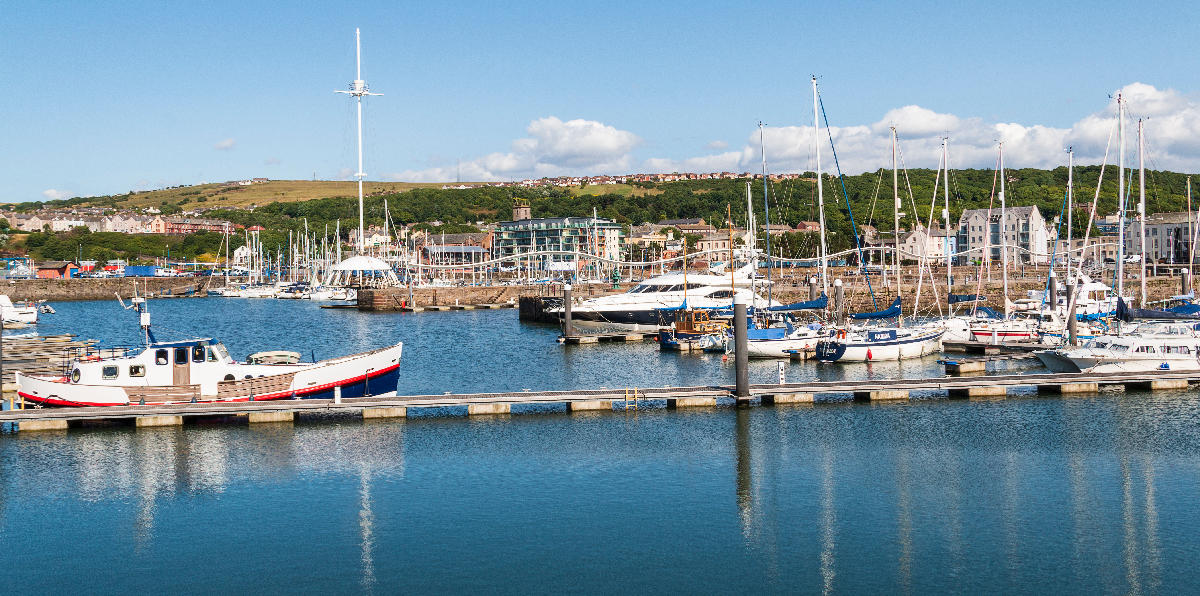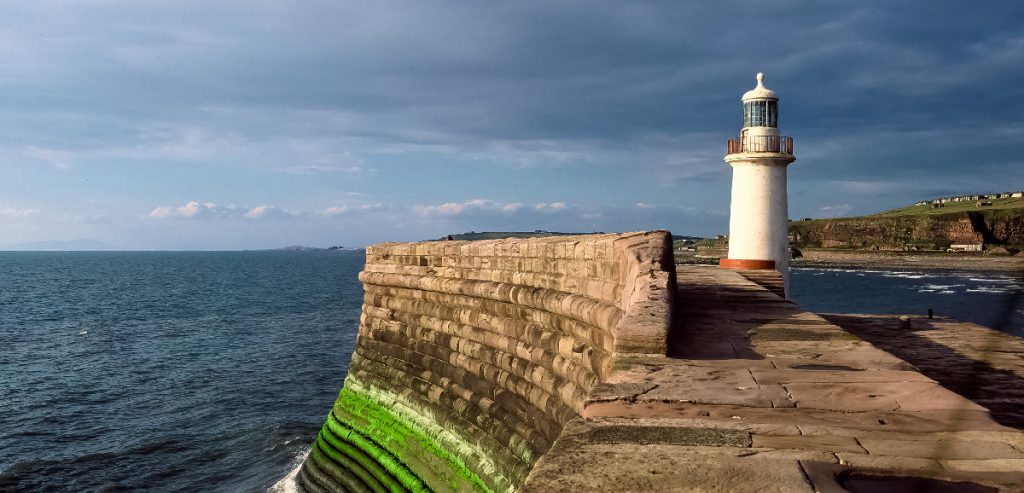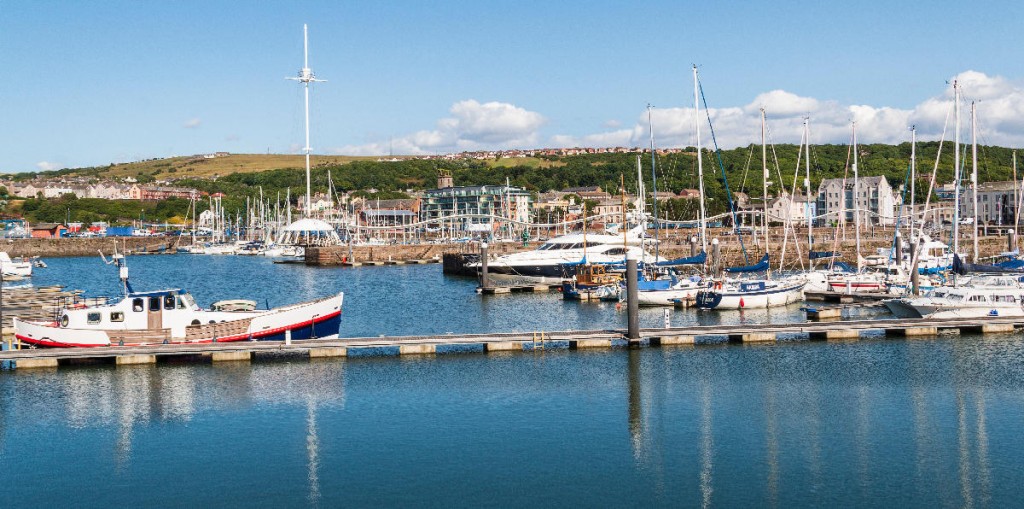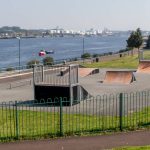
Welcome to Whitehaven The Town With A Big History
Whitehaven is a port town on the west coast of Cumbria, northwest England. It lies midway between Cumbria’s two largest communities, Carlisle and Barrow-in-Furness, and close to the Lake District National Park. Additionally, it is the administrative seat for the Borough of Copeland’s district council.

Image: Graphic55/Shutterstock.com
- Join the Whitehaven Group
- The Whitehaven Business Directory
Looking for events in Penrith? Looking to promote your business, or just chat and share with others in Whitehaven?
Looking for a Business in Whitehaven? head over to our Whitehaven Business Directory
Whitehaven, A Fleeting History
The Romans were the first known settlers in the area when they built a fort at Parton, about a mile north of the present town boundaries of Whitehaven. The fort is thought to have been built around 128 AD and remained permanently occupied up until the 3rd or 4th century. It thought Whitehaven itself was first settled by Irish-Norse Vikings in the 10th century.
Following the arrival of the Normans, a prior at St Bee’s was founded by William de Meschin, around 1125. He granted the priory a large swathe of land along the Cumbrian coast, which included the small fishing village of Whitehaven. Following Henry VIII’s dissolution of the Priory in 1539, ownership of the estate passed between a number of landholders, until it eventually fell into the hands of the locally prominent Lowther family in 1630.
With the purchase of the estate by Sir Christopher Lowther, the development of the town’s port and coal mines were put in motion. In 1634 he built a stone pier at Whitehaven providing access for shipping. This enabled the exportation of coal from the Cumberland Coalfield, which was mainly to Ireland. Whitehaven rapidly grew from a small fishing village to an industrial port.
Lowther’s son, John, became a key figure in the growth and development of the town itself. He acquired the market charter in 1660. His vision for the town was eventually realised in the 1680s when the building began on his planned spacious Georgian grid housing.
Coal Mining
The town’s coal exports continued to grow through the 17th and 18th centuries. At the same time, Whitehaven also became one of the country’s main importers of tobacco from America. Between 1750 and 1772, trade through the port boomed, such that Whitehaven was second only to London in terms of the volume of handled freight.
After the Acts of Union in 1707, Glasgow became increasingly important to the rest of the UK as a port. Gradually, it took over Whitehaven’s tobacco trade. As a result, by the second half of the 18th century, the town’s imports had suffered a significant decline. By the end of the 18th century, Whitehaven’s exports were mainly restricted to shipping coal to Ireland. However, it had turned to import sugar from Barbados, cotton from Antigua, and coffee and cocoa from St Lucia, to replace its lost tobacco trade.
Whitehaven Attacked By The Americans!
On 22 April 1778, during the American War of Independence, an enemy warship, the USS Ranger surreptitiously anchored close to Whitehaven. The ship was captained by John Paul Jones, whose plan was to wreak havoc on the town by setting fire to the 400 ships docked in the harbour. Jones was a Scot, who’d learned his seafaring trade in Whitehaven, so knew the town well.
He went on to serve with distinction in the American Navy, is considered a founding father of the service, but on the night in question, things didn’t go well for him. The story goes, his crew sneaked ashore and managed to overpower the pier master, but then headed straight for the nearest pub. The would-be attackers ended up ‘three sheets to the wind’ and their attempts at the intended act of arson were easy rumbled by the locals, who ran them out of town. Thus, Whitehaven was not only saved on the night but goes down in history as the only place in the UK to encounter an unfriendly American incursion.
During the 19th century, Whitehaven was overtaken by Bristol, Liverpool and Glasgow, in terms of importance. They all had better deep water dock facilities and were closer to large centres of population and industry. The development of the national railway network had also reduced Whitehaven’s earlier competitive advantage of having a source of coal close to its harbour facility. By the mid-18th century some heavy industries in the town, such as shipbuilding and locomotive production also began to take off. However, the decline of the town’s port was palpable, while in 1835 it had 443 registered ships, by the end of the century only 68 remained listed.
The 20th Century
During the early part of the 20th century, the town’s mining industry suffered some of its worst disasters. The biggest tragedy occurred 11 May 1910 at Wellington Pit where 136 miners lost their lives. Between 1922 and 1931, a further 83 men were killed in four different incidents at Haig Pit. And in 1947, another disaster saw 104 men killed at the town’s William Pit.
In 1941, Marchon Chemical Company relocated to Whitehaven from London to escape the German bombing. The company proved to be highly successful, becoming a world leader in the production of detergents. It eventually became the town’s largest employer as mining jobs continued to decline. The company was bought out in 1955 by Albright and Wilson who continued operating under the Marchon banner at Whitehaven.
At the beginning of the 2nd World War, about 10 miles south of Whitehaven, a Royal Ordnance Factory was set up to support the war effort at a site named Sellafield. The government decided that the remoteness of the site, also made it the ideal location to produce the country’s first weapons-grade plutonium.
The Modern Era
The world’s first commercial nuclear power station, Calder Hall, was built at the Sellafield and was opened in 1956 by Queen Elizabeth II. Today, it’s estimated that the Sellafield nuclear complex sustains almost 60% of the employment, either directly or indirectly, in the Borough of Copeland.
In the 1960s, the rejuvenation of the town was started and whole blocks of Georgian housing were demolished. This included all the buildings above George Street and most of the old town to the west of Market Place. Since the 1970s development has been more sympathetic to the town’s history with many older buildings restored to their former glory and new buildings built to blend with their Georgian surroundings.
By 1983, the future of the last working mine in Whitehaven, Haig Pit, was already in doubt due to engineering difficulties. The miners’ strike of 1984–85, brought about by government policy, contributed to further problems at the colliery. Operations at Haig Pit finally ceased on 31 March 1986.

Image: Joyce Holyoak/Shutterstock.com
In 1992, the town’s port lost its last commercial operation when Marchon ceased importing rock phosphate. A masterplan for the harbour was promptly drawn by the appropriate authorities to create a marina and fishing harbour. Initiating the regeneration process, ground investigation work of the whole of the harbour area was carried out by Cumbria County Council in 1993. The harbour rejuvenation included an extension of the existing marina and a number of themed tourist attractions, costing some £16 million.
The population of the town was 23,986 at the 2011 Census.
Whitehaven’s main events are its annual 3-day Maritime festival and 2-day food festival, which attract thousands of tourist to the town.
Getting there!
There are several road routes to Whitehaven but the easiest way is probably to take the M6 motorway, turning off at junction 40 at Penrith. Then head west along the A66, turning off just before Workington, then heading south along the A595, which passes through Whitehaven.
If you’re travelling by train, then the town’s railway station is on the Cumbrian Coast Line. The train service is operated by Northern Rail, which runs between Carlisle in the north, and Barrow in the south.
Local bus services connecting Whitehaven to Workington, Cockermouth, Maryport and Carlisle, are operated by Stagecoach North West.
The nearest international airports are Manchester and Newcastle. A local domestic airport is due to open on the outskirts of Carlisle in 2019, serving Belfast, Dublin and London (Southend).
Places to see in Whitehaven!
St Bees Priory
St. Bees is named after St Bega, said to be an Irish princess who landed there around 900 after sailing across the Irish Sea to avoid an enforced marriage to a Viking chieftain. The 12th Century Priory Church of St Mary and St Bega stands on the site of an earlier church. In 1981 archaeologists discovered on the site of a ruined chapel. They also discovered one of the best-preserved bodies ever found in England from Medieval times. The ‘History Area’ in the church tells the story of that discovery and displays the shroud of the ‘St. Bees Man’. The church also has a number of other interesting relics.
Ennerdale Water
Ennerdale is the most westerly of the lakes, and the most remote. It’s a deep glacial lake, about 4.2 km in length and 1.3 km wide. The water is exceptionally clear, containing a good variety of fish. It’s the only lake in the Lake District that does not have a road running adjacent to it. There’s a path around the lake for walkers, which is a total distance of 10.5 km. The lake is also only a short distance from the Whitehaven to Rowrah cycleway. Almost all of the surrounding land to the lake is owned by the National Trust or the Forestry Commission.
Things to do in Whitehaven
Eating and drinking in Whitehaven!
There are about 25 pubs and half a dozen or so bars/bistros around the Whitehaven town area, with some hosting live music at weekends. Most of these serve typical British fare, with some of these having a limit menu of other cuisines. However, you will also be able to find a few Indian and Italian restaurants around the town, as well.
The Beacon
The award-winning museum tells the story of Copeland. The interactive museum charts the area’s history from its first settlers, through to the Lowther family’s 17th-century development of Whitehaven and beyond to the modern era.
The Rum Story
The Rum Story is a visitor attraction and museum in Whitehaven town centre, located in an original 1785 trading shop and warehouses. The town’s Jefferson family were wine merchants, who imported wine and spirits for over two centuries until 1998. Their story is covered by the Rum Story.
Where to stay?
A rough guide to costs for the most readily available types of accommodation in and around Whitehaven are:
Guesthouse/Bed & Breakfast £40 – £60
Hotel: £60 – £100
Holiday Home: £50 – £70 per person per night (for max. occupancy)
Photo Credit (banner) – Dave Wilson Cumbria
Try Our Whitehaven Quiz
So there you have it our Quick guide to the Cumbrian seaside town of Whitehaven together with our pop quiz to see if you were paying attention! Before you go why not try some of our other quizzes or have a look at some of our other location guides. If you are not already a member still why not join our growing community it’s free and could be very rewarding going forward.

